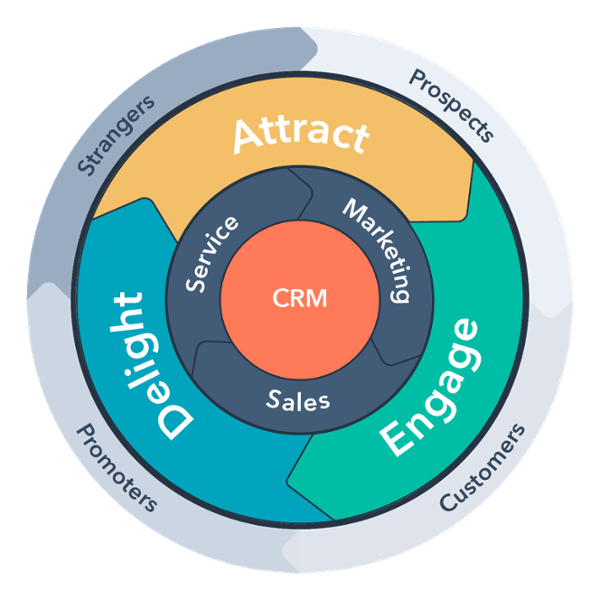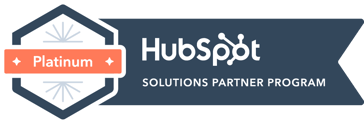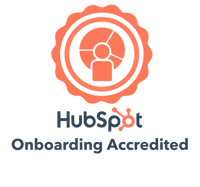For years, the sales process through digital marketing has been viewed as a funnel. You start broad, with ads and blogs and emails that target a wide array of people, and slowly narrow in on your buyer through a series of content and in-person follow-ups. Here at BizzyWeb, we've dutifully followed the funnel approach and mindset.
Recently, our friends at HubSpot began seriously reconsidering the funnel. The trouble with the funnel mindset is that it's static. You pour a liquid through a funnel, and once it hits the jar below that's where it stays. So much of digital marketing is focused on attracting new leads that less time is spent considering that liquid sitting in the jar. A new, more dynamic approach to sales is needed.
Say goodbye to the funnel, and hello to the flywheel.

Understanding the Core of the Flywheel
At the core of the flywheel are the stages of your content influenced by the stages of your buyer's journey. That may sound confusing, but it's very simple if you break it down. Simply put, these stages reflect the intent of your content and what type of contact (current customer, lost customer, new customer) you're reaching. HubSpot defines each stage as:
Attract: Attracting is about using your expertise to create content and conversations that start meaningful relationships with the right people.
Engage: Engaging is about building lasting relationships with people by providing insights and solutions that align with their roadblocks and goals.
Delight: Delighting is about providing an outstanding experience that adds real value, empowers people to reach their goals, and become promoters of your company.
Why the Flywheel is More Dynamic than the Funnel
The best way to understand the flywheel is by going back to our metaphors. Think back to that static jar of liquid left behind after someone completes their journey through the funnel. By contrast, a flywheel is always turning, no matter what point you enter or view it. The flywheel aims to keep current and past customers constantly in the loop along with your current customers, so that you're not losing out on business. The flywheel is also layered, so that you're hitting the type of contact with the type of content best suited for them.
Let's go back to the "attract" stage above. Think about what attraction might look like for a new customer versus a current customer. Perhaps a new customer finds you via an ad on Facebook that links directly to your services. By contrast, a current customer already knows who you are. Instead of attracting them with an ad (which they likely won't see and are even less likely to click on), instead you might send them a targeted email inviting them to download an eBook advertising a sister service to one they already utilize you for.
→Read Now: What Are Inbound Marketing Tactics?
How to Get Started with the Flywheel
If you're ready to start "flywheel-izing" your funnel, we highly recommend checking out HubSpot's full breakdown on the flywheel. There you'll find targeted questions for every type of contact and stage in the buyer's journey, as well as much deeper dive into the flywheel process.
When you make your marketing plan, follow these high-level steps for creating a flywheel approach:
- Identify the core flywheel metric your company will track. Generally speaking, this will probably be a revenue increase, number of new leads coming in each month or even number of form fills on your website.
- Identify your company's forces by flywheel stage. In the graphic above, this the outermost layer (strangers, prospects, promoters and customers).
- Identify points of friction in your current marketing and sales processes. This could be between your customers and employees or between different internal teams.
To aid the process, tap into HubSpot's existing flywheel worksheets:
- Google Slides -- you won’t be able to edit this file directly, so make a copy for an editable version
- PowerPoint
The flywheel may seem a bit overwhelming at first, but once you start your planning you'll notice the ideas starting to spin faster and faster (like the flywheel itself....sorry, we had to). If you need a little help unpacking your flywheel, we're always happy to lend a hand or a brain to bounce ideas off of.
Free Download: Everything You Ever Wanted to Know About Inbound Campaigns
Content is critical, and the best way to create compelling content is by providing value. Inbound campaigns help you find, target, and convert your ideal audience. Click "get my eBook" below to learn how to create buzz-worthy Inbound campaigns that drive action.
BizzyWeb is a Minneapolis-based digital marketing and web design agency that helps companies get the high-quality leads they need to grow and thrive. Our tactics include inbound marketing, SEO, advertising, web design, content creation and sales automation. We are an accredited HubSpot Platinum Partner and we offer full-service HubSpot onboarding, enablement and strategy for new and current users.






